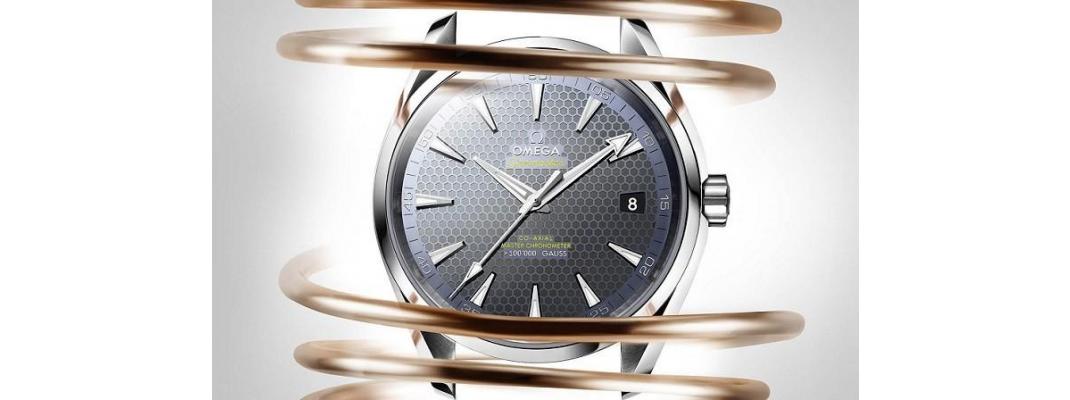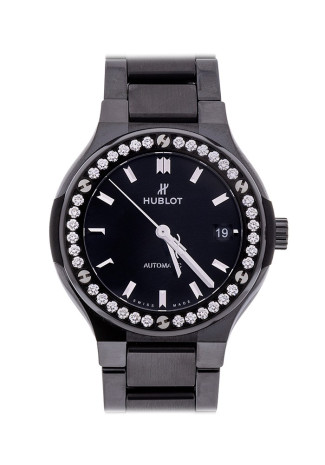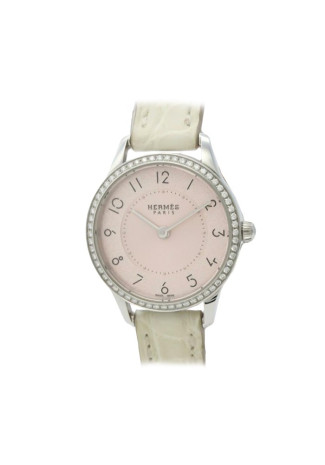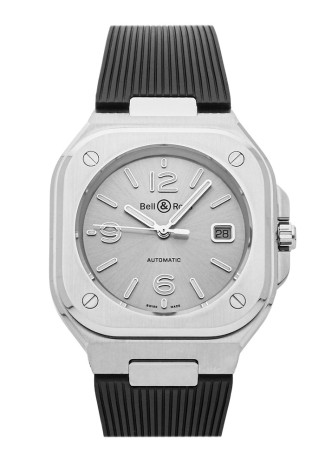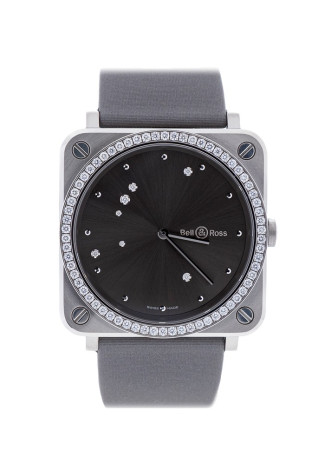Whether you like it or not, we are surrounded by magnets. The device you are using to read this exact article is filled with magnets. It doesn’t matter if you read this on a laptop, your phone or your tablet. You could of course print out this article and read it on paper, but your printer also contains magnets, so that defeats the purpose.
Magnets mean bad news for watches, since the movement of your automatic watch is usually made out of steel. It’s irrelevant if your watch has the price of a pair of sneakers, the price of a small car or the price of a large house, most of them are made out of steel.
This can cause a problem, since steel is magnetic. If your balance wheel isn’t balanced, it won’t keep good time, that’s no rocket science.
Why Was This Invented?
You might think that anti-magnetic watches were specifically designed to protect your watch from household-electromagnets, like speakers and laptops. In fact, the concept of anti-magnetic watches have been around longer than household electromagnetic devices have.
Rolex introduced the first antimagnetic watch, the Milgauss, in 1956. The watch was developed for engineers who worked in power plants and around factories with high electromagnetic fields. The Scientists of the CERN in Geneva all wore Rolexes, because the Milgauss was the only watch that they were able to wear during their job in the 1950’s. Keep in mind that in the fifties, a Rolex was used as a tool watch, not as a piece of jewelry.
Rolex was the first to tackle this problem, but ever since, there have been many changes and upgrades over the years.
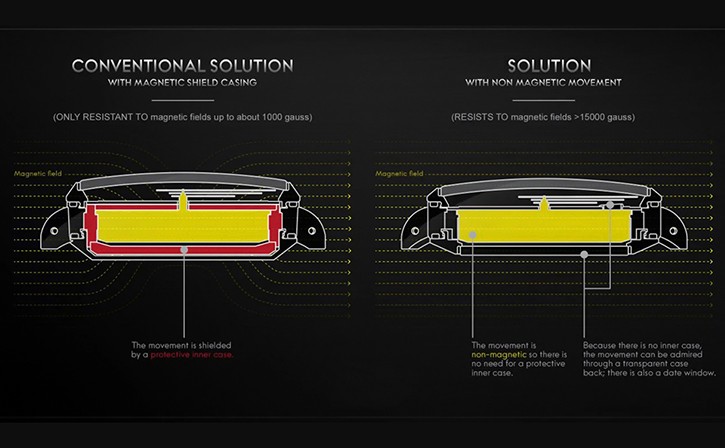
Two Different Approaches
Today, there are two different ways to tackle magnetism in watches:
The first way is to protect the entire movement. This can be done by shielding the whole movement with a magnetically permeable material. Usually soft iron is used. The soft iron can be easily magnetized, but doesn’t contain the magnetism. Once the magnetic field leaves, the material will cease to be magnetic. This way, the soft iron shell protects the movement.
The second method is more modern. This approach is to remove all vulnerable parts, and change them with nonferrous materials that can’t be magnetized. Removing all vulnerable parts is the literal version of the saying ‘better safe than sorry’. An iron-nickel alloy has been used the last few decades. The most recent improvement in the field of anti-magnetic balance springs is silicone. This has been the best and most efficient solution so far.

From Pioneer To Has-Been
Rolex was the first to explore the field of antimagnetic watches. The Milgauss had some seriously impressive stats in 1956. Notice the key words, ‘in 1956’. The Milgauss was resistant to 1000 gauss. You could have guessed that from the name Milgauss, because mille means 1000 in French, and Gauss is a measurement of magnetic induction. Today, models like the Omega Seamaster Aqua Terra have ratings up to 15.000 gauss. Looks like Rolex is still stuck in the fifties.

